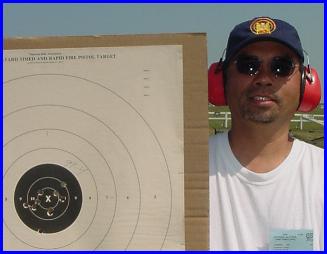
Greetings Shooters,
Go to the mirror, look into your eyes and ask, "Do I have Suspicious Pupils?" The pupil is the round opening in the center of our eyes which appears black. The size of the pupil is the topic of this article.
Since bullseye shooters are law-abiding citizens, this topic may not apply to many of us. However, if you are caught speeding on the interstate on your way to Camp Perry, have firearms in your vehicle, tend to be nervous in character and can never walk a straight line, then you might like to read further. Thank you, John R. for the warning about the speed trap to Camp Perry.
The New England College of Optometry, the University of Massachusetts, the Marblehead Massachusetts Police Department, and the Massachusetts State Police of Sudbury, Massachusetts, were involved in a recent study entitled, "An Evaluation of Pupil Size Standards Use By Police Officers For Detecting Drug Impairment" (March 2004 OPTOMETRY, Journal of the American Optometric Association).
The Drug Evaluation and Classification (DEC) program was developed to detect, arrest and convict drivers impaired by drugs. Police officers trained under this program are known as Drug Recognition Experts (DRE).The DRE will use a 12 step process to identify impairment. I will only be addressing step "seven" which concerns pupil size under three lighting conditions. The three conditions are: room lighting, near-total darkness and direct lighting. "Normal" values that are presently used to determine non-impairment are pupil sizes between 3 to 6.5 millimeters. Pupil size outside this range are considered "suspicious."
The average age of the volunteers in this study was 29.2 years and they were all in excellent health. Many were police officers. Iris color did not have significant effect on pupil size. The most important result of this study is that it revealed many normal test subjects had pupil size as large as 9.0 mm. under near-total darkness conditions. This is much wider than the 6.5 mm. criteria presently used. If your pupil size is larger than 6.5 mm. under similar lighting conditions, then you have "suspicious pupils" and would have failed step number seven. Of course, if you are innocent, you would pass the other eleven steps. DRE are professionals and would evaluate all 12 steps before an arrest is made which then may lead to a conviction. The results of this study are intended to assist the DRE with the quality and accuracy of their pupil evaluation. The critera presently used may be flawed. Stay away from those state troopers!
Good Vision and Good Shooting To All,
Norman H. Wong, O.D.
